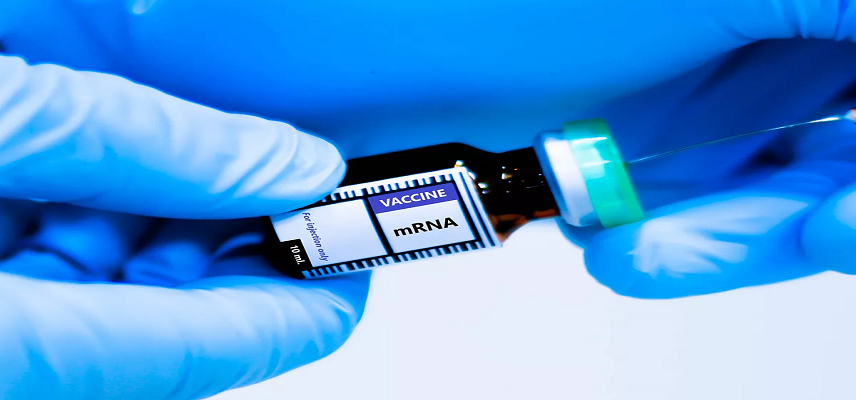Tectonic Therapeutic to Present Positive Phase 1a Results of TX45, a Long-Acting, Fc-Relaxin Fusion Protein At AHA 2024
Tectonic Therapeutic to present positive phase 1a results of TX45, a long-acting, Fc-relaxin fusion protein at AHA 2024
Overview
Tectonic Therapeutic, Inc., a clinical stage biotechnology company focused on the discovery and development of therapeutic proteins and antibodies that modulate the activity of GPCRs, announced detailed results from the phase 1a clinical trial of its lead asset, TX45, a long-acting, Fc-relaxin fusion protein. The poster will be presented at the American Heart Association (AHA) Scientific Sessions on November 16, 2024 from 3-4pm EST in Chicago, Illinois. Favourable topline results from the TX45 phase 1a clinical trial were announced on September 19, 2024, along with the dose selection for the TX45 APEX phase 2 trial that is currently underway in patients with PH-HFpEF.
Words from the CEO: Tectonic
- Favorable phase 1a results allowed us to confidently move ahead with our APEX phase 2 clinical trial. We continue to be very enthusiastic about advancing TX45 as a potential best-in-class, long-acting relaxin therapeutic for patients with PH-HFpEF,” said Alise Reicin, M.D., president and chief executive officer of Tectonic.
- Both of our ongoing clinical studies in patients with PH-HFpEF remain on track with topline results from our phase 1b hemodynamic trial expected in late 1Q’2025 or early 2Q’2025, followed by topline results from our APEX phase 2, 24-week clinical trial anticipated in 2026.”
About the Phase 1 Trial
The phase 1a single ascending dose (SAD) clinical trial assessed the safety and tolerability of TX45 in 55 healthy volunteers. Additionally, the Phase 1a clinical trial evaluated pharmacokinetic (PK) and pharmacodynamic (PD) measures of TX45 based on relaxin’s known ability to increase RPF in order to create an exposure-response model for phase 2 dose selection.
Phase 1a Highlights:
Safety Results: TX45 was well tolerated with no drug-related severe adverse events, no evidence of immune-mediated clearance, and no antidrug antibodies or injection site reactions.
- The most common Treatment Emergent Adverse Event was orthostatic tachycardia (increase in heart rate while standing), which was transient and not associated with decreases in blood pressure.
- No clinically meaningful changes in laboratory values, ECG intervals or blood pressure were observed.
Pharmacokinetic Results: TX45 demonstrated a potential best-in-class half-life for a long-acting relaxin therapy.
Final analysis showed that a single dose of TX45 had approximately 50% subcutaneous bioavailability with a half-life (t1/2) of two to three weeks (14-20 days).
- Pharmacodynamic Results and Exposure Response-Modelling: TX45 administration resulted in increased RPF across all doses.
- Comparing TX45 blood levels to RPF allowed for the development of a robust exposure-response model for phase 2 dose selection.
- The exposure-response model is a nonlinear, mixed-effects Emax model that included repeated measurements of RPF for each subject in the study (>200 data points), resulting in a modelled Emax (maximum effect) of 33% (SE 3.3%, p < 0.0001).
- The magnitude of effect of TX45 on RPF was consistent with other relaxin therapeutics. Mean dose cohort effects (n=6 per cohort) demonstrated increased RPF of up to 42%.
- The model also demonstrated that the two doses selected for the APEX phase 2 study, 300 mg every two weeks (Q2W) and 300 mg every four weeks (Q4W), yield maximal or near-maximal PD effects on human RPF at steady state trough.
Words from the CMO: Tectonic
- Results from the phase 1a clinical trial confirms why we are enthusiastic about TX45 as a potential long-acting relaxin therapeutic. TX45 was clearly active, was well tolerated and demonstrated a prolonged half-life,” said Marcella K Ruddy, M.D., chief medical officer of Tectonic.
- We are excited to build on this positive phase 1a study with the ongoing single-dose Phase 1b hemodynamic trial and the APEX phase 2 clinical trial. Results from these trials are expected to define the therapeutic effects of TX45 and enable us to understand its potential role in the treatment of patients with PH-HFpEF.
The APEX Phase 2 Clinical Trial
- TX45 is being evaluated in the APEX phase 2 clinical trial (NCT06616974) in patients with Group 2 Pulmonary Hypertension in Heart Failure with Preserved Ejection Fraction (“PH-HFpEF”).
- The trial is designed to evaluate efficacy in the broad PH-HFpEF population and enrich for the subset of Group 2 PH patients with a more severe form of disease.
- The trial plans to enroll up to 180 subjects who will be randomized to one of two dose regimens of TX45 or placebo.
- TX45 will be administered by subcutaneous injection over 24-weeks followed by an 8-week follow-up period.
- The primary and secondary endpoints of the trial include change from baseline in pulmonary vascular resistance (PVR) as well as other relevant hemodynamic changes.
- It will also explore TX45’s effect on change in six-minute walk distance.
- TX45 aims to address the physiological abnormalities of PH-HFpEF through its effects on both pulmonary and systemic vasodilation, cardiac diastolic dysfunction and potential remodeling in both the pulmonary vessels and cardiac muscle, which could translate into a clinically meaningful improvement in exercise capacity in these patients.
The Fc-relaxin Fusion Protein: TX45
- TX45 is an Fc-relaxin fusion protein with optimized pharmacokinetics and biophysical properties that activates the RXFP1 receptor, the G-protein coupled receptor target of the hormone relaxin.
- Relaxin is an endogenous protein, expressed at low levels in both men and women that is a pulmonary and systemic vasodilator with lusitropic, anti-fibrotic and anti-inflammatory activity.
- In normal human physiology, relaxin is upregulated during pregnancy where it exerts vasodilative effects, reduces systemic and pulmonary vascular resistance and increases cardiac output to accommodate the increased demand for oxygen and nutrients from the developing fetus.
- Relaxin also exerts anti-fibrotic effects on pelvic ligaments to facilitate delivery of the baby.
The Pulmonary Hypertension
- The World Health Organization has defined 5 groups of pulmonary hypertension (“PH”).
- Tectonic is focused on the Group 2 subtype, a condition that develops due to left-sided heart disease, specifically pulmonary hypertension secondary to left heart failure with preserved ejection fraction (“PH-HFpEF”).
- In patients with PH-HFpEF, chronic heart failure leads to increased blood pressure in the pulmonary arteries, exerting severe strain on the right side of the heart, which adapts poorly to the increased pressure.
- This increased pulmonary pressure gradually causes worsening exercise capacity, shortness of breath and right-sided heart failure which can lead to death.
- Although several Group 1 PH (Pulmonary Arterial Hypertension, PAH) medications have been explored in Group 2 PH, to date, no medications have been approved for its treatment.
About the Company: Tectonic
Tectonic is a biotechnology company focused on the discovery and development of therapeutic proteins and antibodies that modulate the activity of G-protein coupled receptors (GPCRs).

Optimize Your trial insights with Clival Database.
Are you exhausted from the uncertainty of trial insights pricing? Clival Database ensures the clarity in the midst of the global scenario for clinical trials to you.Clival Database is one of the best databases that offers an outstanding number of clinical trial data in terms of 50,000+ molecules and from primary regulatory markets as well as new entrants like Indian and Chinese markets.
With Clival, you get accurate positioning of historical sales data, patent database, company profiling, safety & efficacy, and prediction of launch of new innovative molecules helping you to align your research and driving down the cost.
To add value, we further break down our analytics for you so that improving your operational effectiveness; optimizing your clinical trials; and offering you accurate and high-quality data at lowest possible prices becomes possible.
Elevate your trial success rate with the cutting-edge insights from Clival database.
Check it out today and make more informed sourcing decisions! Learn More!







